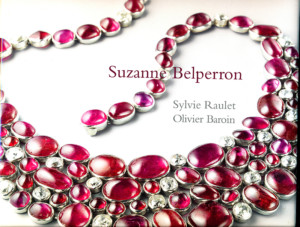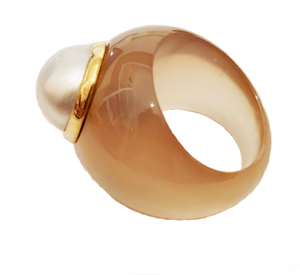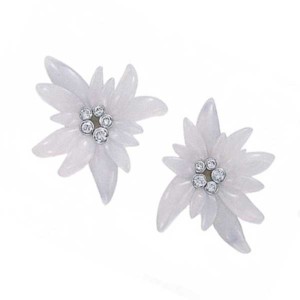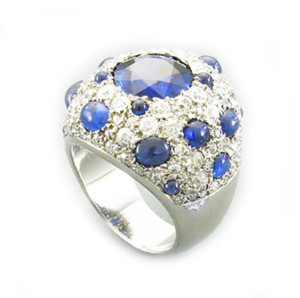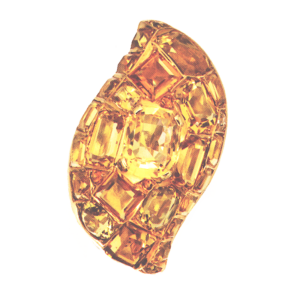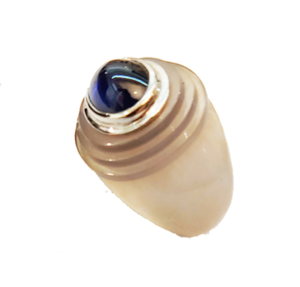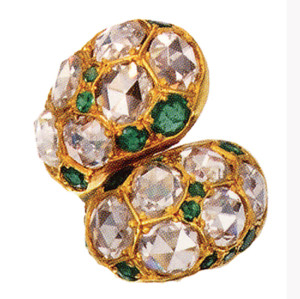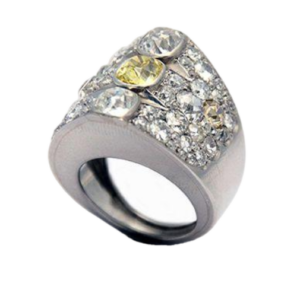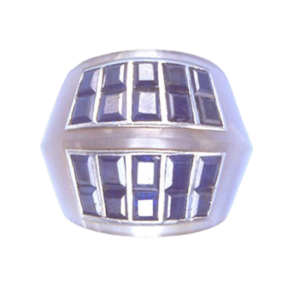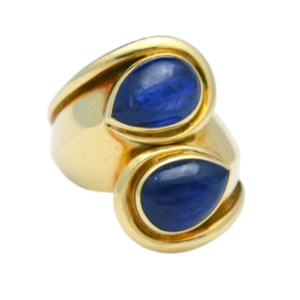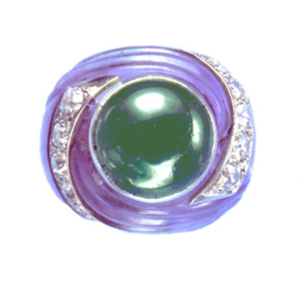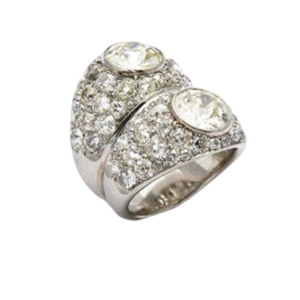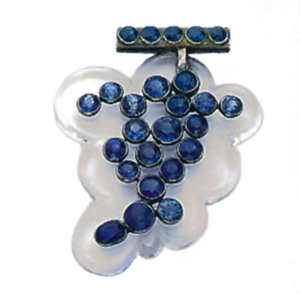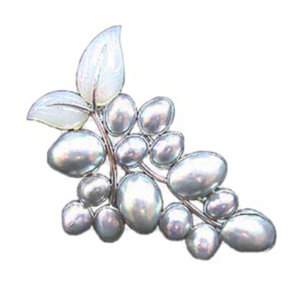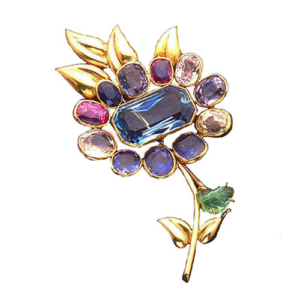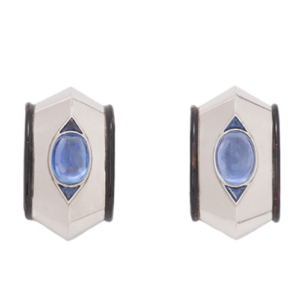(1900 – 1983)
Suzanne Belperron was born Suzanne Vuillerme, and studied studied art and design at the École des beaux arts in Besancon before coming to Paris. She married Jean Belperron In 1927. It was most probably at the beaux-arts that she met and became friendly with Germain Boivin, the daughter of René and Germaine Boivin.
After working briefly for Cartier, she worked for Boivin, beginning in 1919 as a model maker and designer. She resigned in 1932. She was one of their most important designers, and her style had a profound effect on the look of Boivin’s jewelry. It is interesting to note that in the Boivin book, they play down her design contributions, almost relegating her to the role of a glorified saleswoman. There are many pieces pictured in the book and credited as Boivin, however, that we have seen or actually owned bearing Belperron’s makers mark, and not the mark for Boivin. This would certainly seem to indicate that they were her designs, and she continued to use them after she left Boivin.
In 1932, she left Boivin, for reasons that we can only speculate about, and established a highly successful collaboration with a pearl dealer named Bernard Herz, which was called Herz – Belperron. They were located at 59, rue du Chateaudun. Suzanne was an enthusiastic traveler, and went to the Near East to study gold working techniques, and to India to buy rubies and sapphires for her designs. Their jewelry was superbly executed by Groene et Darde, who later became Darde et Fils.
Suzanne Belperron had a very distinctive personal style, in dress as well as in jewelry design, and is reputed to have been strikingly beautiful. In other ways, she was reserved in manner and rather secretive, never signing her jewelry. Of course, it is possible that she felt her jewels to be distinctive enough to not require her signature. In speaking with someone who knew her well, I was told that she was a bit paranoid about the French tax people, and preferred to keep a low business profile.
The Duke and Duchess of Windsor helped propel her to fame. The Duke, who had nothing if not good taste in jewelry, commissioned numerous pieces for his Duchess. Belperron had many other wealthy and prominent clients as well, among them Mrs. Solomon Guggenheim, Elsa Sciaparelli, Frank Sinatra, Diana Vreeland and Colette.
During WWII, Bernard Herz was taken to a concentration camp, where he died in 1943. His son, Jean, was taken as a prisoner of war. Suzanne transferred the company to his name in order to save it, and upon Jeans’ return in 1945, the firm was known as Jean Herz – Suzanne Belperron, and remained active until 1974. After this, Suzanne continued to work from her apartment. She died in 1983 by accidentally scalding herself in a hot bath.
Suzanne Belperron’s jewelry is both dramatic and sensual. Her favorite materials were semi-precious stones, such as rock crystal, agate, chalcedony and citrine, and she made full use of their various optical qualities by carving an entire piece out of stone, often in complex, swirling or stepped design. She was also quite fond of oddly-shaped pearls, which were set directly into the agate, creating a subtle contrast of textures without the intrusion of metal.
This carving work was quite difficult to do and it is likely that many pieces were broken for every one that was actually produced.
In her early work for Boivin, we see the influence of Art Deco – the carvings are often geometrically stepped. Progressing into the 1930’s her forms become more rounded. The swirl, in fact, was one of her signature forms. She also began incorporating stylized natural motifs into her designs. Bunches of grapes or berries, carved with voluptuous dimensions in various materials are a readily identifiable motif of hers.
Stylized flowers, plump leaves, birds and butterflies were incorporated into her designs; again, often carved of a translucent material and set with diamonds or other colored stones for accent. Some of these pieces have moveable wings or petals.
She designed diamond jewelry as well, but always with her strongly personal style taking precedence over the preciousness of the materials. Indeed, the stones were usually not of the greatest quality, and her distinctive curves and volutes dominate the designs.
When she worked in yellow gold, her style was different, often imbued with an ancient or medieval quality. While she did design some pieces in polished gold, her preference was otherwise. She often textured her gold with very fine hammerings and scratches, which must have been quite time-consuming and requiring a great deal of time, but giving the piece a rich glow that resembled the patina of age and wear. She used lush and jewel-like combinations of stones – ruby and amethyst, variously colored sapphires, amethyst and emeralds.
Suzanne Belperron excelled at designing rings. Each piece is truly a sculpture. She fully explored the seemingly simple idea of a dome of translucent material, either plain or carved in some way, and set with a cabochon stone in a simple gold border. It has been widely copied, but, as with all “simple” things, subtlety and proportion are everything, and the copies lack the perfection of her work.
The rights to Herz – Belperron’s designs were subsequently purchased by Ward Landrigan, who continues to produce many of the designs.
Showing all 16 results


